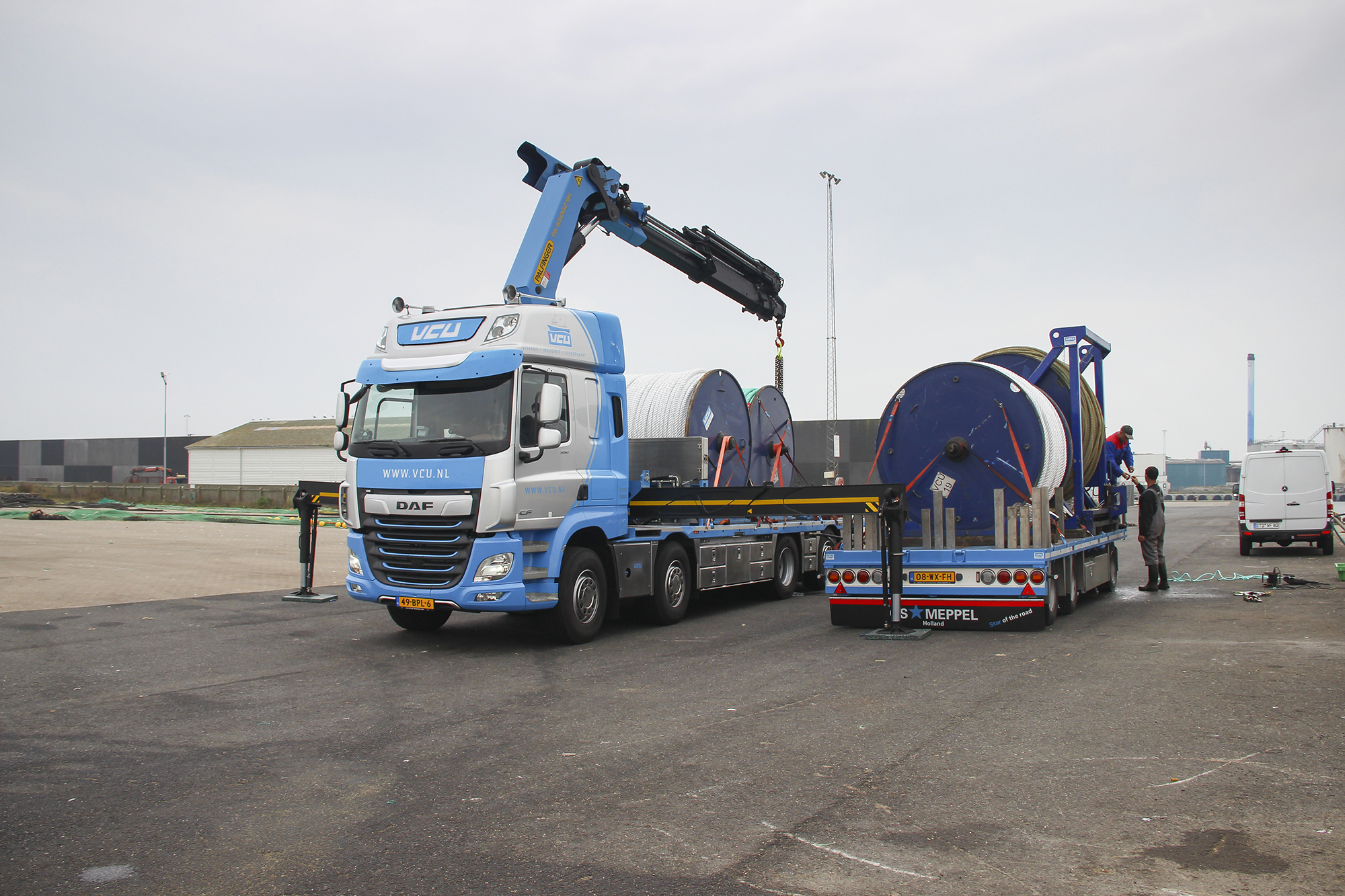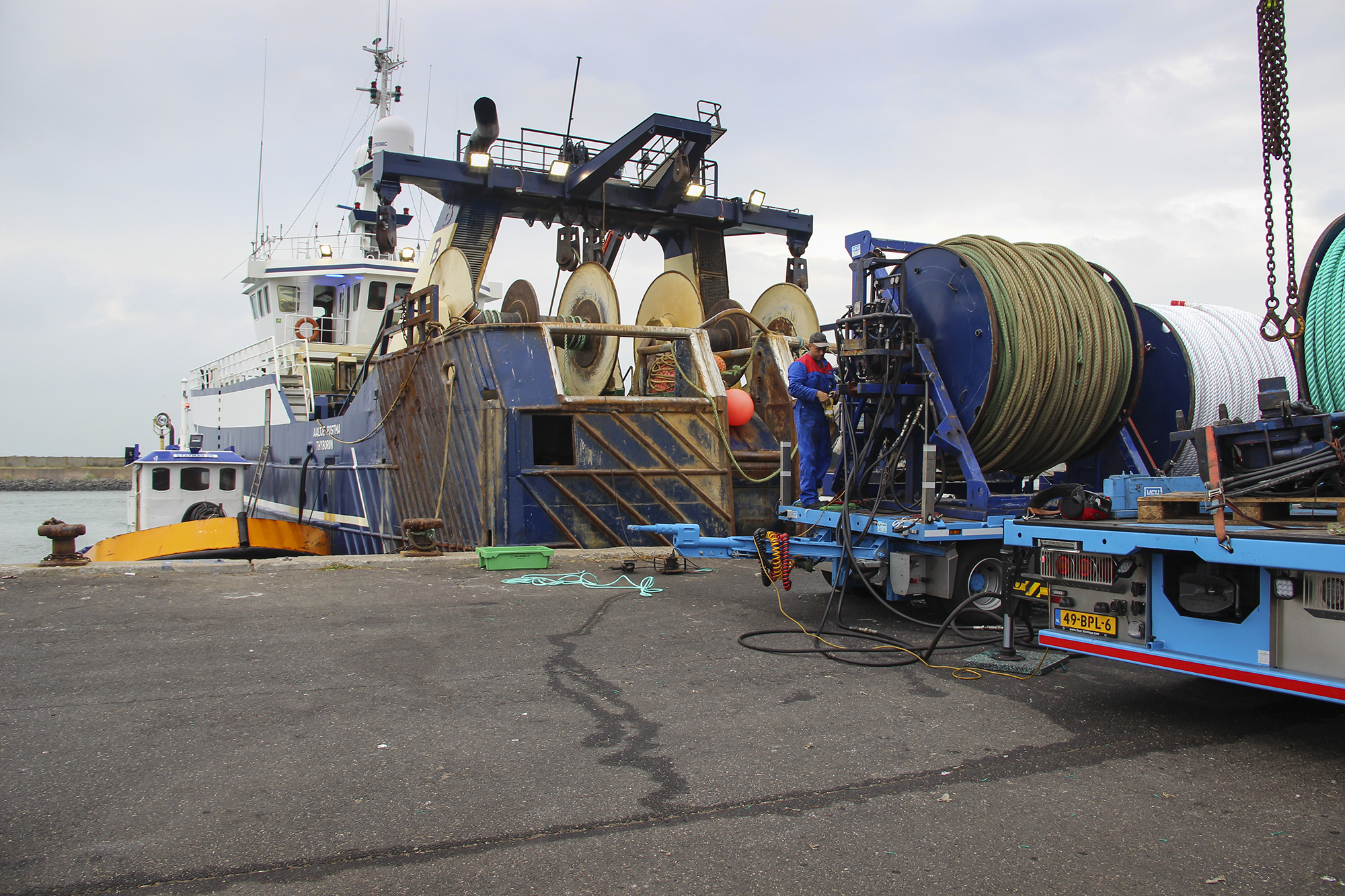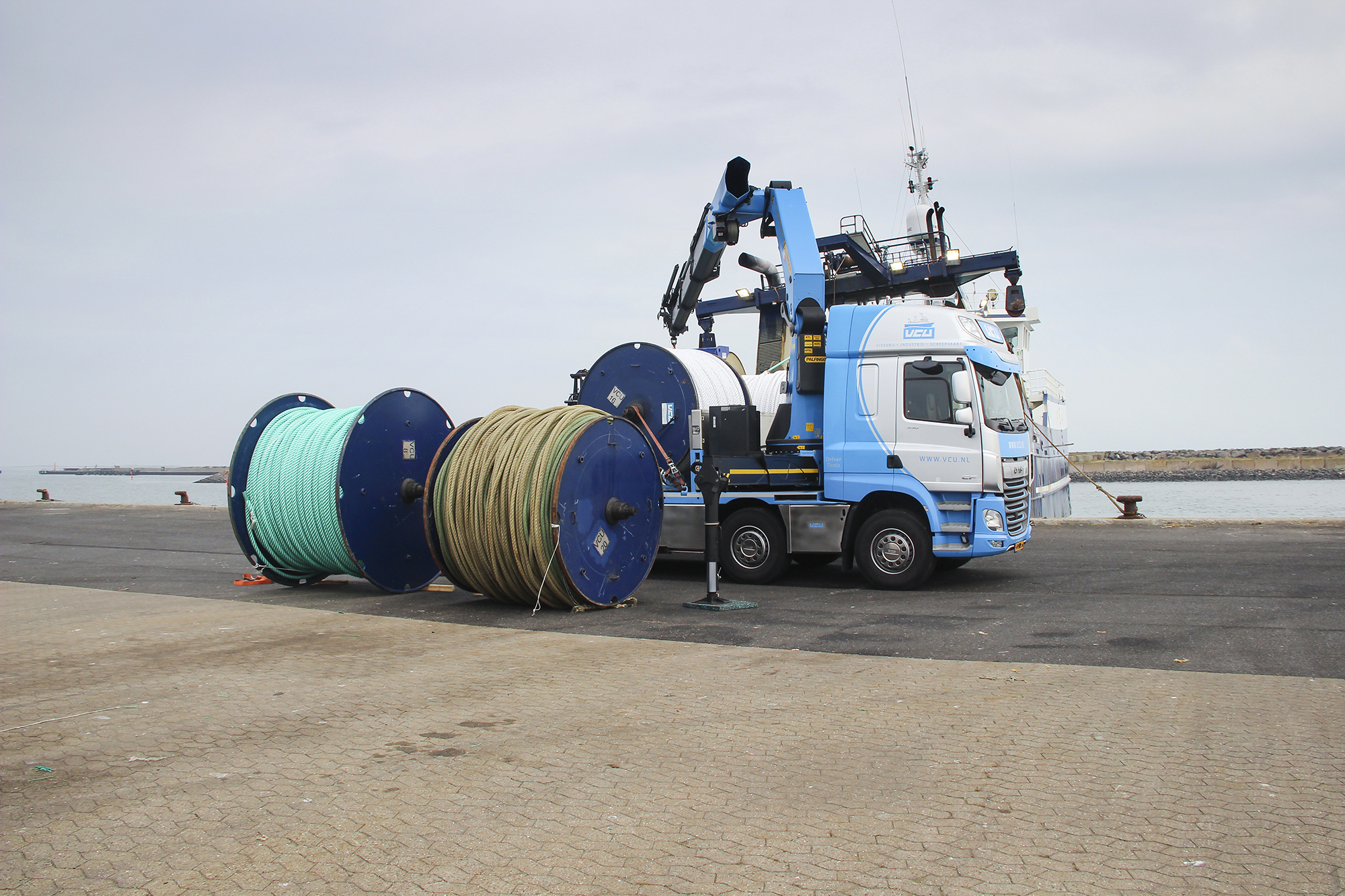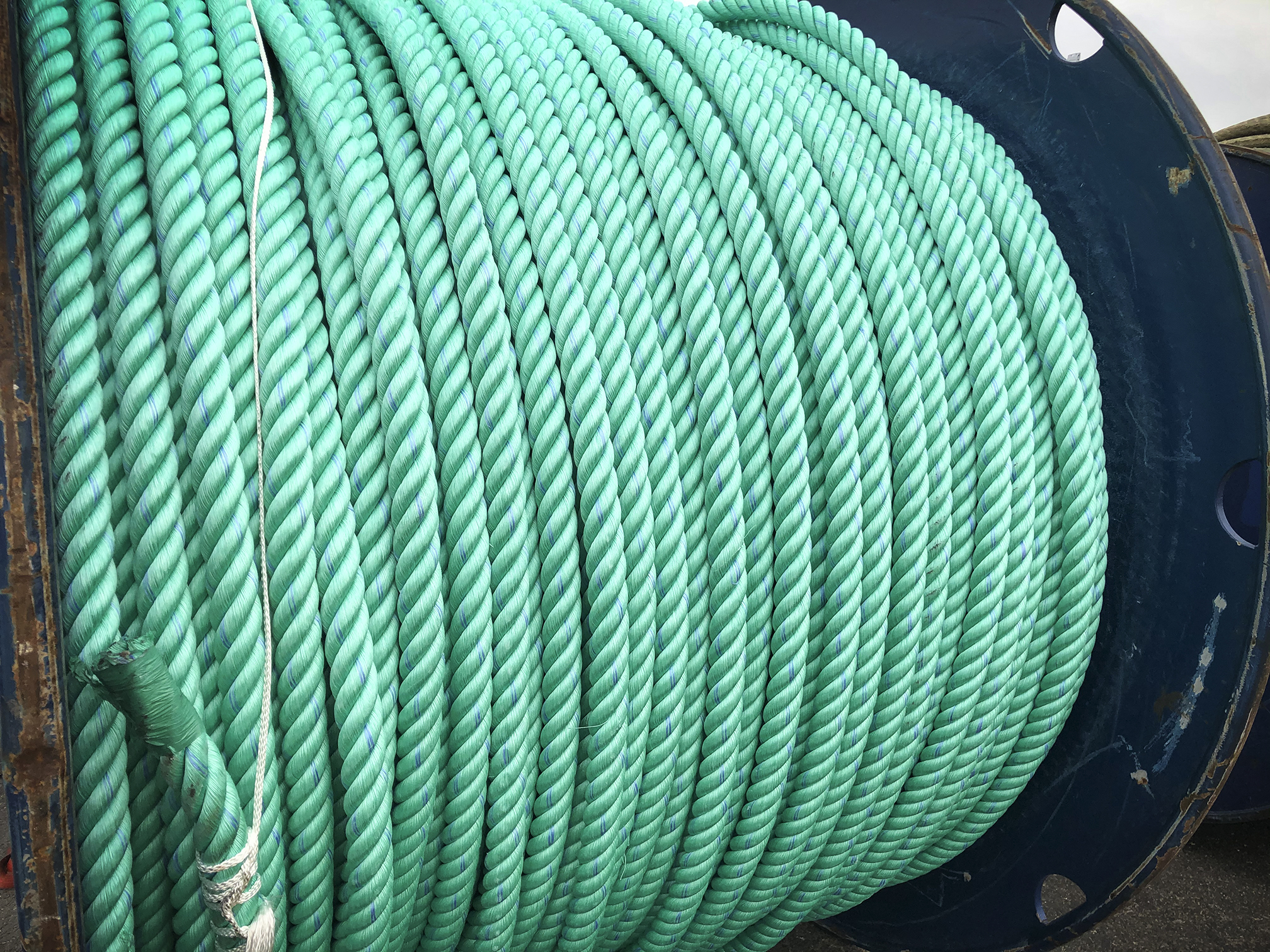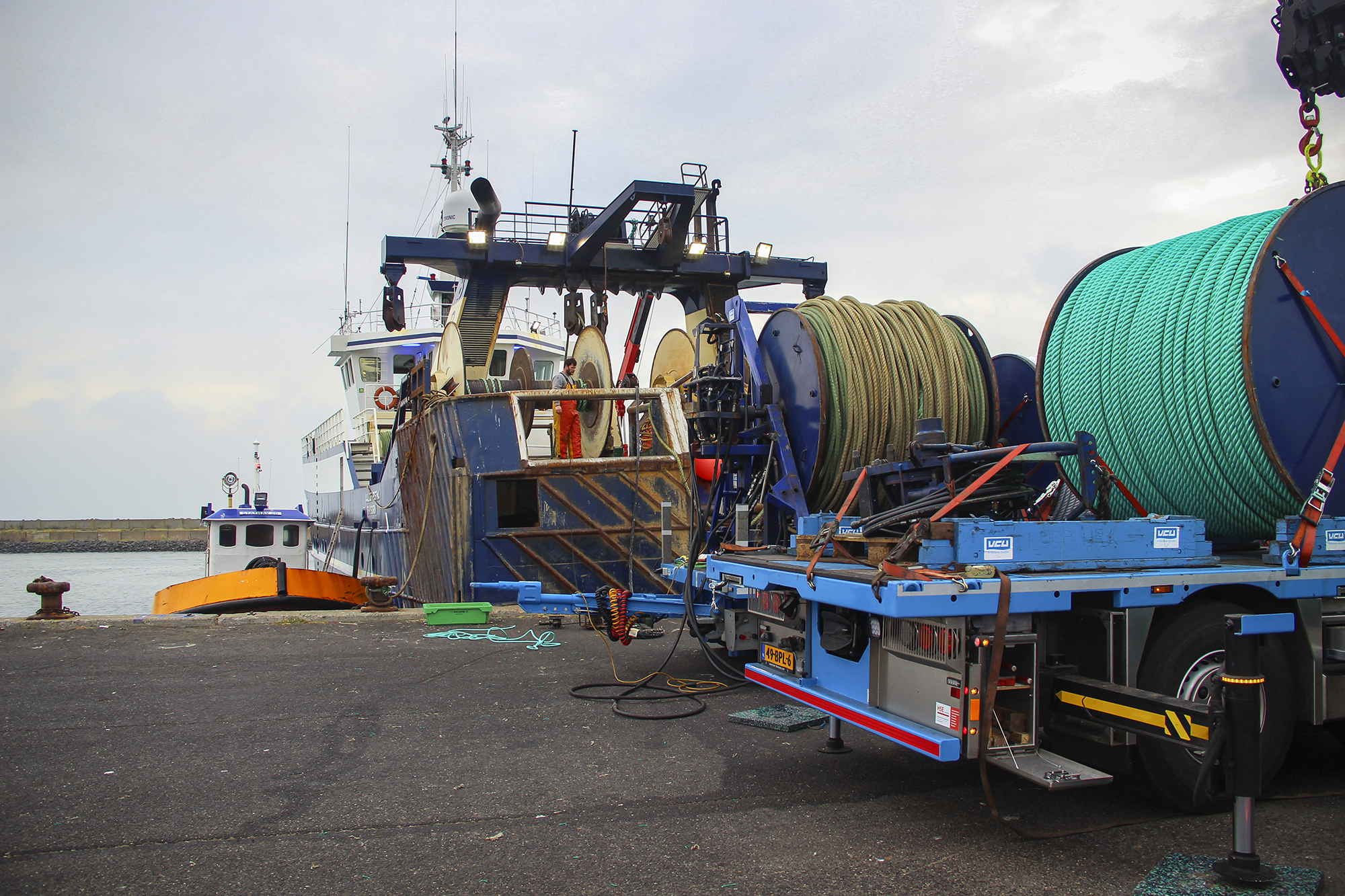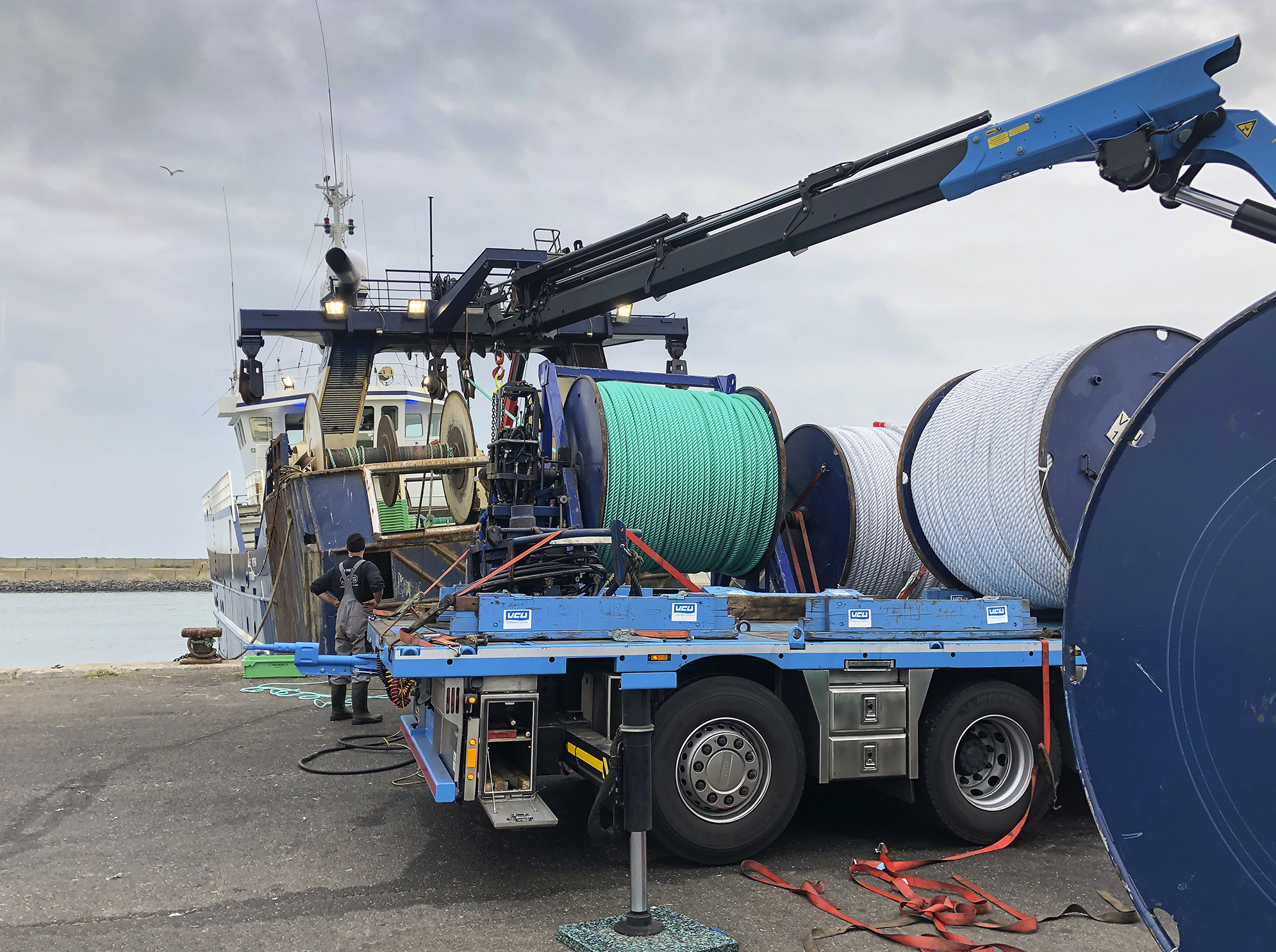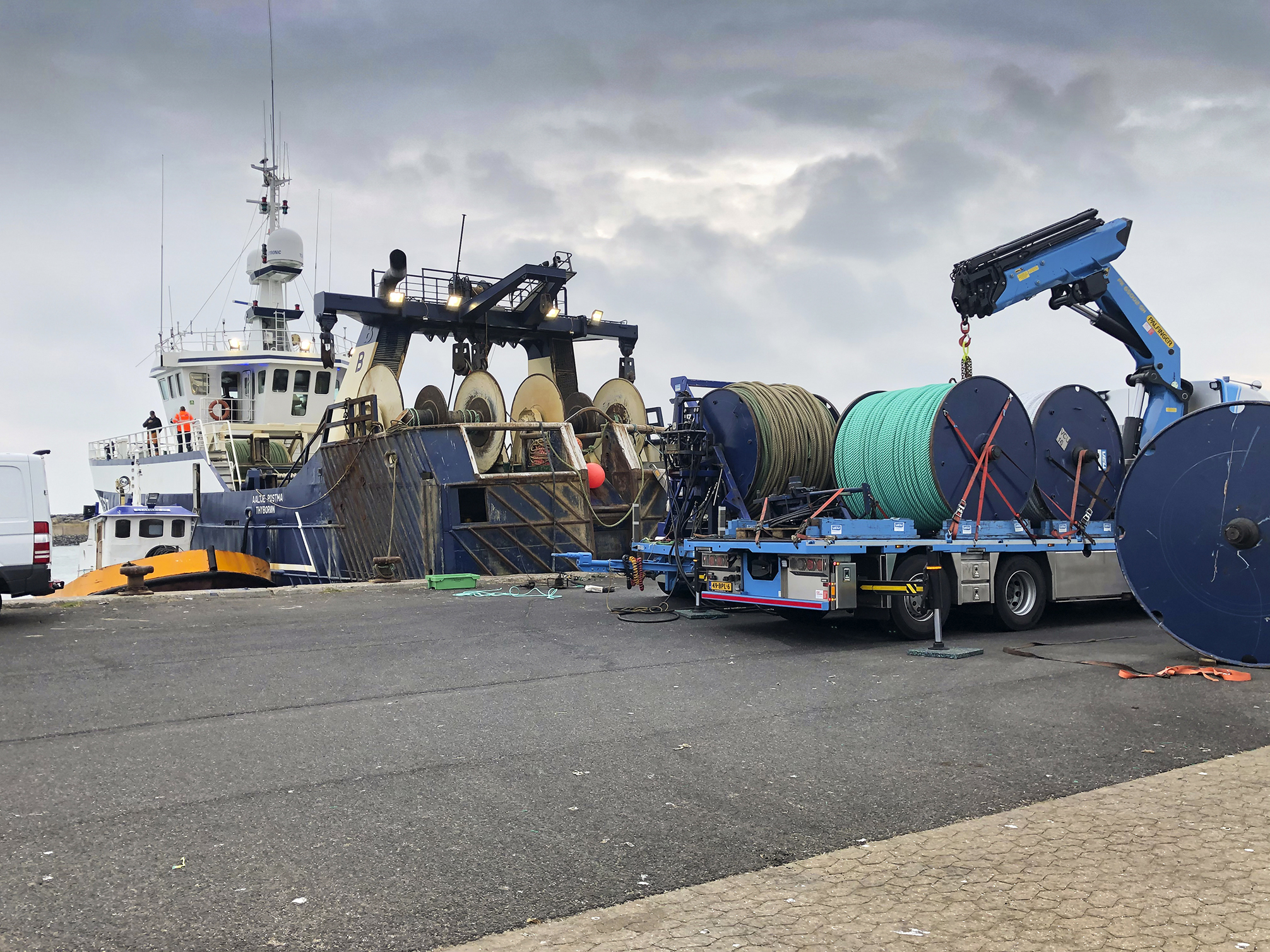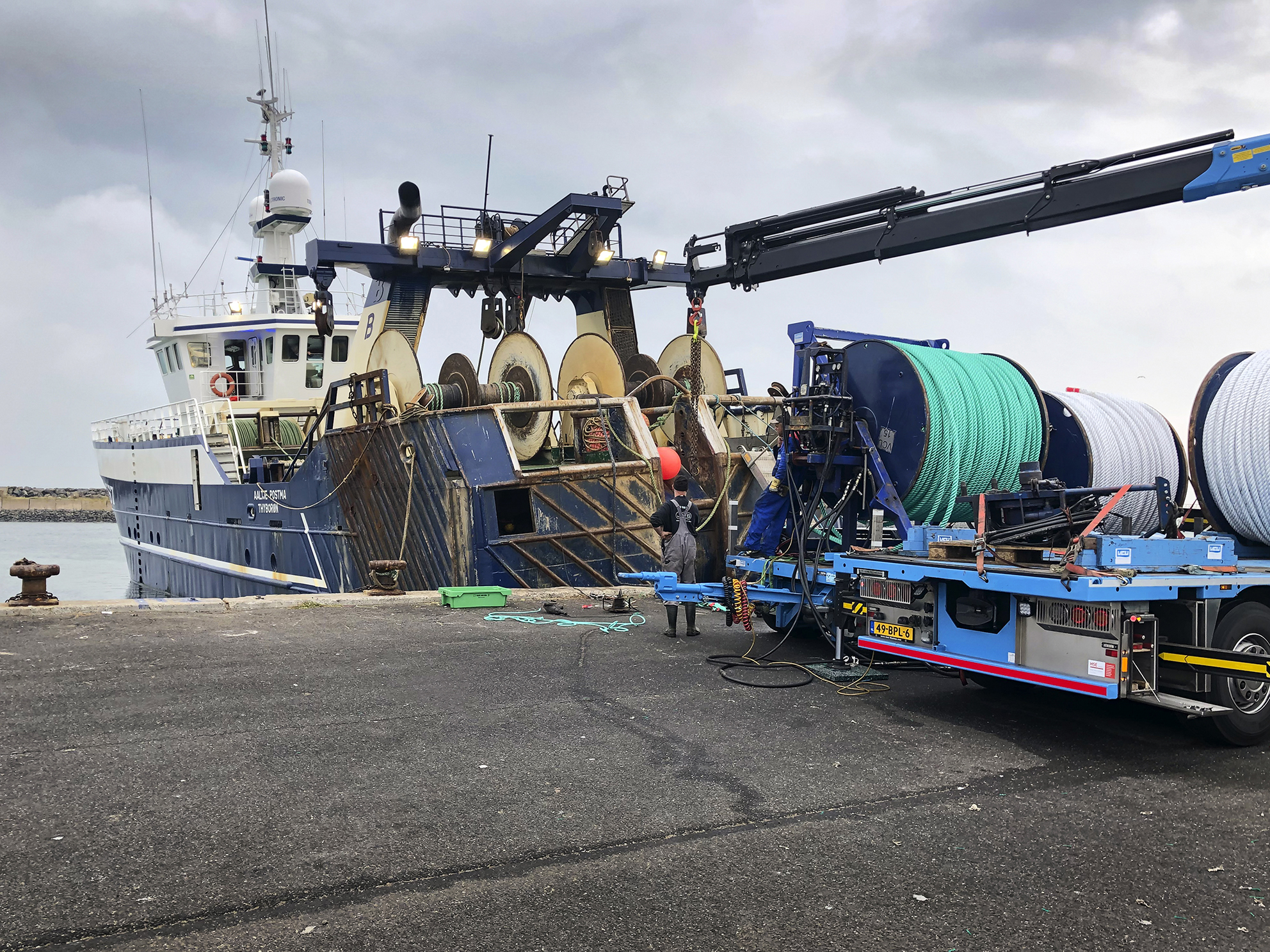
Replacing Danish seine line
Recycling Danish seine line
Operating and maintaining a fishing vessel includes replacing worn-out fishing equipment. The Danish seine line from the fly-shooting fishing technique used in fishing for human consumption is a good example of this. The rope strands wear down after two June-November fishing seasons. They then need to be replaced with a new set of seine lines. For skipper Tamme Bolt, it is important that the worn-out seine lines are handled responsibly and recycled. He was therefore happy to find a good solution for easily handling the worn-out lines.
“I am very aware of the environment and sustainability as a fisherman. We have a responsibility to look after the marine environment, and the fish we catch for a living. We work based on this principle every day,” says Tamme Bolt. “We observe sustainable fishing principles and strive to deliver absolute top quality to the fish auction. It’s also important to me that our worn-out fishing gear is recycled.”
Tamme Bolt practises environmentally certified fishing. His fish, like the vast majority of Danish-caught fish, carry the MSC (Marine Stewardship Councils) certification eco-label. The MSC eco-label is the consumer’s guarantee that the fish they buy are traceable all the way back to the catch area, that the product has not contributed to overfishing and that it comes from sustainable fishing.
Replacing Danish seine line
Fly shooting is a low impact and efficient fishing method that is gaining ground in fishing for human consumption. Somewhere between 3-5,000 metres of rope are used. It is therefore important to find a good method for easily replacing the Danish seine line, and for recycling the long, worn-out ropes. VCU B.V, a Dutch company, has seen opportunities in this area. When fishermen order new ropes, they offer the service of winding the old ropes off the vessel onto empty drums, in the same workflow as new rope is coiled on the vessel. The old worn-out ropes are thereby collected for transport back to be recycled in the same operation. “As fisherman, we prefer not to stay too long in port. The vessel needs to be at sea fishing, and we prefer to only call at port to unload fish at the fish auction. With this solution, sustainability has not become a burden that slows down our work. We are very pleased with the solution VCU offers. In just 3-4 hours we can replace our Danish seine lines, with a clear conscience, because we know the old rope will be recycled,” says Tamme Bolt.
Easy handling of worn-out ropes
Danish seine lines consist of a long steel wire, wrapped in a PP polypropylene rope. It is an art to handle the long heavy ropes efficiently during replacement. It is also an art to separate the two materials (steel and PP polypropylene) for recycling.
Albert Hartman, a manager at VCU B.V., took up these challenges and decided to develop a good solution to both back in 2008. He started to develop an efficient truck-based solution for rolling up the worn-out ropes on drums during replacement. The idea was to make it possible to drive out to the fishing vessel’s home port, with trucks loaded with new ropes on drums and empty drums for rolling up the old ropes. He aimed to make the operation as fast and efficient as possible, so that the fishing vessel would not be held up unnecessarily in port, and as easy to handle as possible, so that a single technician could perform the task. The goal was for the old worn-out ropes to be prepared for transport in the same operation, so they could be easily taken back to the Netherlands for recycling on the return journey.
VCU B.V. solved the second challenge, of separating the steel cable and PP polypropylene rope, in close cooperation with another company. A machine was specially developed that could separate the two components. It was hard work to get the machine to operate efficiently. The process has also led to input into rope production, requesting that the number of splices along the ropes be minimised, as these complicate the separation process. When recycling is considered, it can make sense to optimise the production process to promote sustainability. This operation is a very good example of this.
High recycling value
The steel from the cables in the seine lines has high recycling value. The steel quality is so high that it can be reused in the production of new tools. So it makes good sense to separate it for recycling. The PP polypropylene is currently shipped to a large recycling company in the Netherlands.
Sustainable development
Fishermen in several countries have become aware of VCU’s offer to take the old ropes back for recycling. Many fishermen in the Netherlands and France are making use of VCU’s services, and Scottish fishermen are also taking note of the solution. Fishing continues to develop in an increasingly sustainable direction. It is very positive when innovative companies support this trend by finding excellent solutions that meet the needs of fishermen.
Published Tuesday, November 3, 2020


